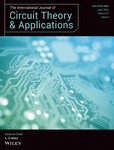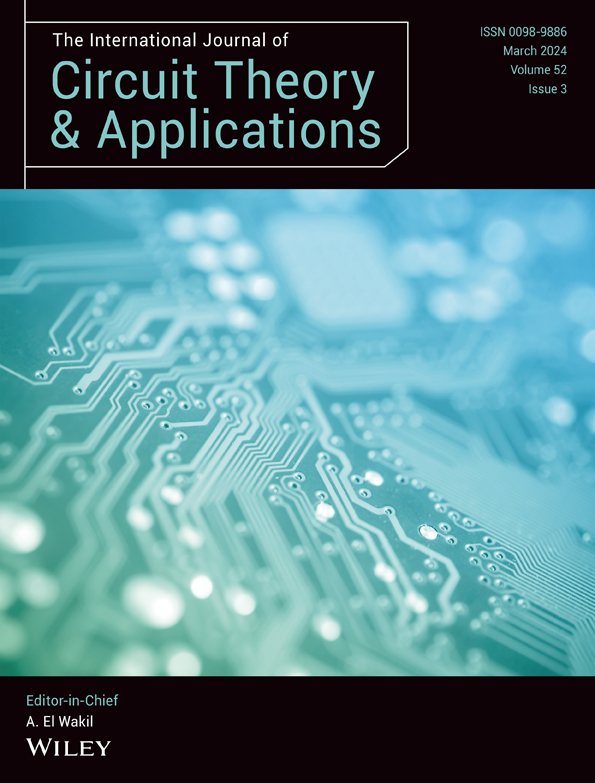
A Dimensional Consistency Aware Time Domain Analysis of the Generic Fractional Order Biquadratic System (2022)
Title : A Dimensional Consistency Aware Time Domain Analysis of the Generic Fractional Order Biquadratic System
Researcher : Banchuin, R. and Roungsan Chaisricharoen
Department : Faculty of Engineering & Graduated School of IT, Siam University, Bangkok, Thailand
Email : rawid.ban@siam.edu
Abstract : In this research, the time domain analysis of the fractional order biquadratic system with nonzero input and nonzero damping ratio has been performed. Unlike the previous works, the analysis has been generically done with dimensional consistency awareness without referring to any specific physical system where nonzero input and nonzero damping ratio have been allowed. The fractional differential equation of the system has been derived and analytically solved. The physical measurability of the dimensions of the fractional derivative terms which have been defined in Caputo sense, and response with significantly different dynamic from its dimensional consistency ignored counterpart have been obtained due to our dimensional consistency awareness. The resulting solution is applicable to the fractional biquadratic systems of any kind with any physical nature. Based on such solution and numerical simulations, the influence of the fractional order parameter to all major time domain parameters have been studied in detailed. The obtain results provide insight to the fractional order biquadratic system with dimensional consistency awareness in a generic point of view.
Keywords: fractional order biquadratic system, fractional differential equation, fractional time component parameter, dimensional consistency, time domain analysis
Link to article : Journal of Mobile Multimedia, 2022, Vol. 18 No.3, pp. 789–806. https://doi.org/10.13052/jmm1550-4646.18316
Journal : Journal of Mobile Multimedia / in Scopus
Citation : Banchuin, R., & Chaisricharoen R. (2022). A dimensional consistency aware time domain analysis of the generic fractional order biquadratic system. Journal of Mobile Multimedia, 18(3), 789–806. https://doi.org/10.13052/jmm1550-4646.18316
ฐานข้อมูลงานวิจัย มหาวิทยาลัยสยาม : https://e-research.siam.edu/kb/a-dimensional-consistency/

A novel generalized fractional-order memristor model with fully explicit memory description (2023)
Title : A novel generalized fractional-order memristor model with fully explicit memory description
Researcher : Banchuin, R.
Department : Faculty of Engineering, Siam University, Bangkok, Thailand
Email : rawid.ban@siam.edu
Abstract : In this work, a novel generalized mathematical model of fractional-order memristor with fully explicit memory description has been proposed. For obtaining such full explicit memory description, the Atangana-Baleanu fractional derivative in Liouville-Caputo sense, which employs a nonsingular kernel, has been adopted as the mathematical basis. The proposed model has been derived without regarding to any specific conventional memristor. A comparison with the singular kernel fractional derivative-based model has been made. The behavioral analysis of the fractional-order memristor based on the proposed model has been performed, where both DC and AC stimuli have been considered. In addition, its application to the practical fractional-order memristor-based circuit and its extension to the fractional-order memreactance have also been shown. Unlike the singular kernel fractional derivative-based model, a fully explicit memory description can be obtained by ours. Many other interesting results that are contradict to the previous singular kernel fractional derivative-based ones, e.g., the fractional-order memristor that can be locally active, have been demonstrated. The abovementioned extension can be conveniently performed. In summary, this is the first time that a nonsingular kernel fractional derivative has been applied to the fractional-order memristor modeling and the resulting model with a fully explicit memory description has been proposed. The proposed model is also highly generic, applicable to the practical circuit, and extendable to the fractional-order memreactance.
Link to article : International Journal of Circuit Theory and Applications, 2023, 51(4), pp. 1935–1957. https://doi.org/10.1002/cta.3410
Journal : International Journal of Circuit Theory and Applications / in Scopus
Bibliography : Banchuin, R. (2023). A novel generalized fractional-order memristor model with fully explicit memory description. International Journal of Circuit Theory and Applications, 51(4), 1935–1957. https://doi.org/10.1002/cta.3410

Analytical model of inverse memelement with fractional order kinetic (2022)
Title : Analytical model of inverse memelement with fractional order kinetic
Researcher : Banchuin, R.
Department : Faculty of Engineering & Graduated School of IT, Siam University, Bangkok, Thailand
Email : rawid.ban@siam.edu
Abstract : In this work, the analytical model of inverse memelement with fractional order kinetic has been proposed. The classical yet noncontroversial Caputo fractional derivative has been adopted for modeling such fractional order kinetic due to its simplicity yet accuracy. Based on the proposed model, the analysis of fractional order kinetic inverse memristor has been thoroughly performed where both nonperiodic and periodic excitations have been considered. Analytical formulations of the related parameters, for example, the rate of changes of inverse memristance, area of inverse memristance loop, and area of pinched hysteresis loop, and so on, have been performed. The extension of the proposed model to the fractional inverse memelement has been performed where the fractional inverse memristor has been analyzed. We have found that the inverse memristor still behaves in an opposite manner to the memristor even with the fractional order kinetic. All obtained results have been found to be intuitively applicable to any inverse memelement. The equivalent circuit models of both fractional inverse memristor and fractional inverse memelement have also been presented. This work provides a comprehensive understanding on both inverse memelement with fractional order kinetic and fractional inverse memelement. The realization of the emulator of such inverse memelement with fractional order kinetic and the fractional inverse memelement emulator has been found to be interesting opened research questions.
Link to article : International Journal of Circuit Theory and Applications, 2022, 50(7), pp. 2342–2377. https://doi.org/10.1002/cta.3264
Journal : International Journal of Circuit Theory and Applications / in Scopus
Bibliography : Banchuin, R. (2022). Analytical model of inverse memelement with fractional order kinetic. International Journal of Circuit Theory and applications, 50(7), 2342-2377. https://doi.org/10.1002/cta.3264
ฐานข้อมูลงานวิจัย มหาวิทยาลัยสยาม : https://e-research.siam.edu/kb/analytical-model-of-inverse/

Comparative analyses of electrical circuits with conventional and revisited definitions of circuit elements: a fractional conformable calculus approach (2022)
Title : Comparative analyses of electrical circuits with conventional and revisited definitions of circuit elements: a fractional conformable calculus approach
Researcher : Banchuin, R.
Department : Faculty of Engineering, & Graduated School of IT, Siam University, Bangkok, Thailand
Email : rawid.ban@siam.edu
Abstract :
Purpose
Design/methodology/approach
Findings
Originality/value
Link to article : COMPEL – The International Journal for Computation and Mathematics in Electrical and Electronic Engineering, 2022, 41(1), pp. 258-282. https://doi.org/10.1108/COMPEL-03-2021-0079
Journal : COMPEL – The International Journal for Computation and Mathematics in Electrical and Electronic Engineering / in Scopus
Citation: Banchuin, R. (2022). Comparative analyses of electrical circuits with conventional and revisited definitions of circuit elements: A fractional conformable calculus approach. COMPEL – The International Journal for Computation and Mathematics in Electrical and Electronic Engineering, 41(1), 258-282. https://doi.org/10.1108/COMPEL-03-2021-0079
ฐานข้อมูลงานวิจัย มหาวิทยาลัยสยาม : https://e-research.siam.edu/kb/comparative-analyses-of-electrical-circuits/

Comparative analysis of suitability of fractional derivatives in modelling the practical capacitor (2022)
Title : Comparative analysis of suitability of fractional derivatives in modelling the practical capacitor
Researcher : Banchuin, R.
Department : Faculty of Engineering, & Graduated School of IT, Siam University, Bangkok, Thailand
Email : rawid.ban@siam.edu
Abstract :
Purpose
Design/methodology/approach
Findings
Originality/value
Link to article : COMPEL – The International Journal for Computation and Mathematics in Electrical and Electronic Engineering, 2022, 41(1), 304-318. https://doi.org/10.1108/COMPEL-08-2021-0293
Journal : COMPEL – The International Journal for Computation and Mathematics in Electrical and Electronic Engineering / in Scopus
Citation : Banchuin, R. (2022). Comparative analysis of suitability of fractional derivatives in modelling the practical capacitor. COMPEL – The International Journal for Computation and Mathematics in Electrical and Electronic Engineering, 41(1), 304-318. https://doi.org/10.1108/COMPEL-08-2021-0293
ฐานข้อมูลงานวิจัย มหาวิทยาลัยสยาม : https://e-research.siam.edu/kb/comparative-analysis-of-suitability/

Generic analytical models of memelement and inverse memelement with time-dependent memory effects (2023)
Title : Generic analytical models of memelement and inverse memelement with time-dependent memory effects
Researcher : Banchuin, R.
Department : Faculty of Engineering, & Graduated School of IT, Siam University, Bangkok, Thailand
Email : rawid.ban@siam.edu
Abstract :
Purpose
Design/methodology/approach
Findings
Originality/value
Link to article : COMPEL – The International Journal for Computation and Mathematics in Electrical and Electronic Engineering, 2023, 42(6), pp. 1669–1689. https://doi.org/10.1108/COMPEL-03-2023-0085
Journal : COMPEL – The International Journal for Computation and Mathematics in Electrical and Electronic Engineering / in Scopus
Citation : Banchuin, R. (2023). Generic analytical models of memelement and inverse memelement with time-dependent memory effects. COMPEL – The International Journal for Computation and Mathematics in Electrical and Electronic Engineering, 42(6), 1669–1689. https://doi.org/10.1108/COMPEL-03-2023-0085

Noise analysis of electrical circuits on fractal set (2022)
Title : Noise analysis of electrical circuits on fractal set
Researcher : Banchuin, R.
Department : Faculty of Engineering, & Graduated School of IT, Siam University, Bangkok, Thailand
Email : rawid.ban@siam.edu
Abstract :
Purpose
Design/methodology/approach
Findings
Originality/value
Link to article : COMPEL – The International Journal for Computation and Mathematics in Electrical and Electronic Engineering, 2022, 41(5), pp. 1464–1490. https://doi.org/10.1108/COMPEL-08-2021-0269
Journal : COMPEL – The International Journal for Computation and Mathematics in Electrical and Electronic Engineering / in Scopus
Citation : Banchuin, R. (2022). Noise analysis of electrical circuits on fractal set. COMPEL – The International Journal for Computation and Mathematics in Electrical and Electronic Engineering, 41(5), 1464–1490. https://doi.org/10.1108/COMPEL-08-2021-0269
ฐานข้อมูลงานวิจัย มหาวิทยาลัยสยาม : https://e-research.siam.edu/kb/noise-analysis-of-electrical-circuits/

Nonlocal fractal calculus based analyses of electrical circuits on fractal set (2022)
Title : Nonlocal fractal calculus based analyses of electrical circuits on fractal set
Researcher : Banchuin, R.
Department : Faculty of Engineering, & Graduated School of IT, Siam University, Bangkok, Thailand
Email : rawid.ban@siam.edu
Abstract :
Purpose
Design/methodology/approach
Findings
Originality/value
Link to article : COMPEL – The International Journal for Computation and Mathematics in Electrical and Electronic Engineering, 2022, 41(1), 528–549. https://doi.org/10.1108/COMPEL-08-2021-0269
Journal : COMPEL – The International Journal for Computation and Mathematics in Electrical and Electronic Engineering / in Scopus
Citation : Banchuin, R. (2022). Nonlocal fractal calculus based analyses of electrical circuits on fractal set. COMPEL – The International Journal for Computation and Mathematics in Electrical and Electronic Engineering, 41(1), 528–549. https://doi.org/10.1108/COMPEL-08-2021-0269
ฐานข้อมูลงานวิจัย มหาวิทยาลัยสยาม : https://e-research.siam.edu/kb/nonlocal-fractal-calculus/

On the analytical modeling of fractal memelement and inverse memelement (2024)
Title : On the analytical modeling of fractal memelement and inverse memelement
Researcher : Banchuin, R.
Department : Faculty of Engineering, Siam University, Bangkok, Thailand
Email : rawid.ban@siam.edu
Abstract : In this work, an improved analytical model of fractal memelement in which the pinched point shifting has been considered and the original analytical model of fractal inverse memelement have been proposed. These fractal circuit elements are the memelement, and inverse memelement operates based on the principle of electromagnetic in fractal time/space, which must be applied whenever the current flows through fractal media. These models are important because these memory elements can be realized based on the porous material, which is a fractal media. In addition, they can employ self-similarity, which is hard to be simulated by using the traditional models. This is because such self-similarity can be well explained by the fractal set-based model, yet those traditional models are based on the set of real values. Therefore, for deriving the proposed models, the fractal calculus, which is oriented to the fractal set, has been adopted as the mathematical basis. From the analytical and numerical analyses based on the derived models, it has been found that both memelement and inverse memelement can retain their unique frequency characteristics despite being operated based on the abovementioned principle. In addition, their input–output relationships are mathematically differentiable albeit the inputs and outputs themselves are not.
Link to article : International Journal of Circuit Theory and Applications, Version of Record online: 26 March 2024 https://doi.org/10.1002/cta.4023
Journal : International Journal of Circuit Theory and Applications / in Scopus
Bibliography : Banchuin, R. (2024, March 26). On the analytical modeling of fractal memelement and inverse memelement. International Journal of Circuit Theory and Applications, Version of Record online. https://doi.org/10.1002/cta.4023

On The Fractional Domain Analysis of HP TiO2 Memristor Based Circuits with Fractional Conformable Derivative (2021)
Title : On The Fractional Domain Analysis of HP TiO2 Memristor Based Circuits with Fractional Conformable Derivative
Researcher : Banchuin, R.
Department : Faculty of Engineering, & Graduated School of IT, Siam University, Bangkok, Thailand
Email : rawid.ban@siam.edu
Abstract : For the first time, the physical memristor-based circuits i.e., HP TiO2 memristor-based circuits, of both series and parallel structures, have been extensively analyzed in the fractional domain by means of the state of the art yet simple fractional conformable derivative-based differential equations. Different outcome from the hypotheticalmemory element-based previous researches have been obtained. The dimensional consistencies of the fractional derivatives have also been concerned. The often-cited Joglekar’s window function has been adopted for modelling the boundary effect of the memristor and adding more nonlinearity close to the bounds of the memristor’s state variable. The formulated fractional differential equations have been solved and the related electrical quantities have been determined. The computational simulations have been performed. The stability analyses of both circuits have also been presented where it has been mathematically verified that only these HP TiO2 memristor-based circuits are stable always due to the boundary effect which does not exist in hypothetical elements assumed in those previous works. We also point out that that only those HP TiO2 memristor-based circuits of order higher than 3 are capable to exhibit the complex dynamics as such memristor lacks the local activity.
Link to article : Cogent Engineering, 2021, 8(1), 1986198. https://doi.org/10.1080/23311916.2021.1986198
Journal : Cogent Engineering / in Scopus
Citation : Banchuin, R. (2021). On the fractional domain analysis of HP TiO2 memristor based circuits with fractional conformable derivative. Cogent Engineering, 8(1), 1986198. https://doi.org/10.1080/23311916.2021.1986198
ฐานข้อมูลงานวิจัย มหาวิทยาลัยสยาม : https://e-research.siam.edu/kb/on-the-fractional-domain/